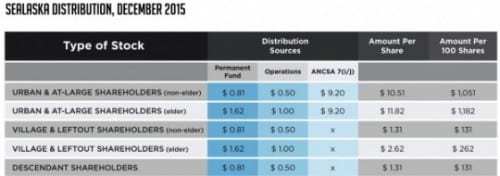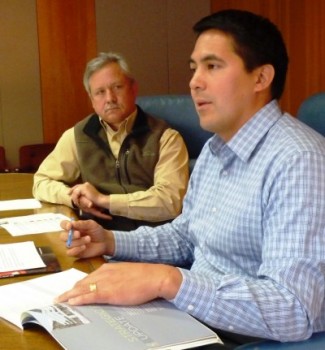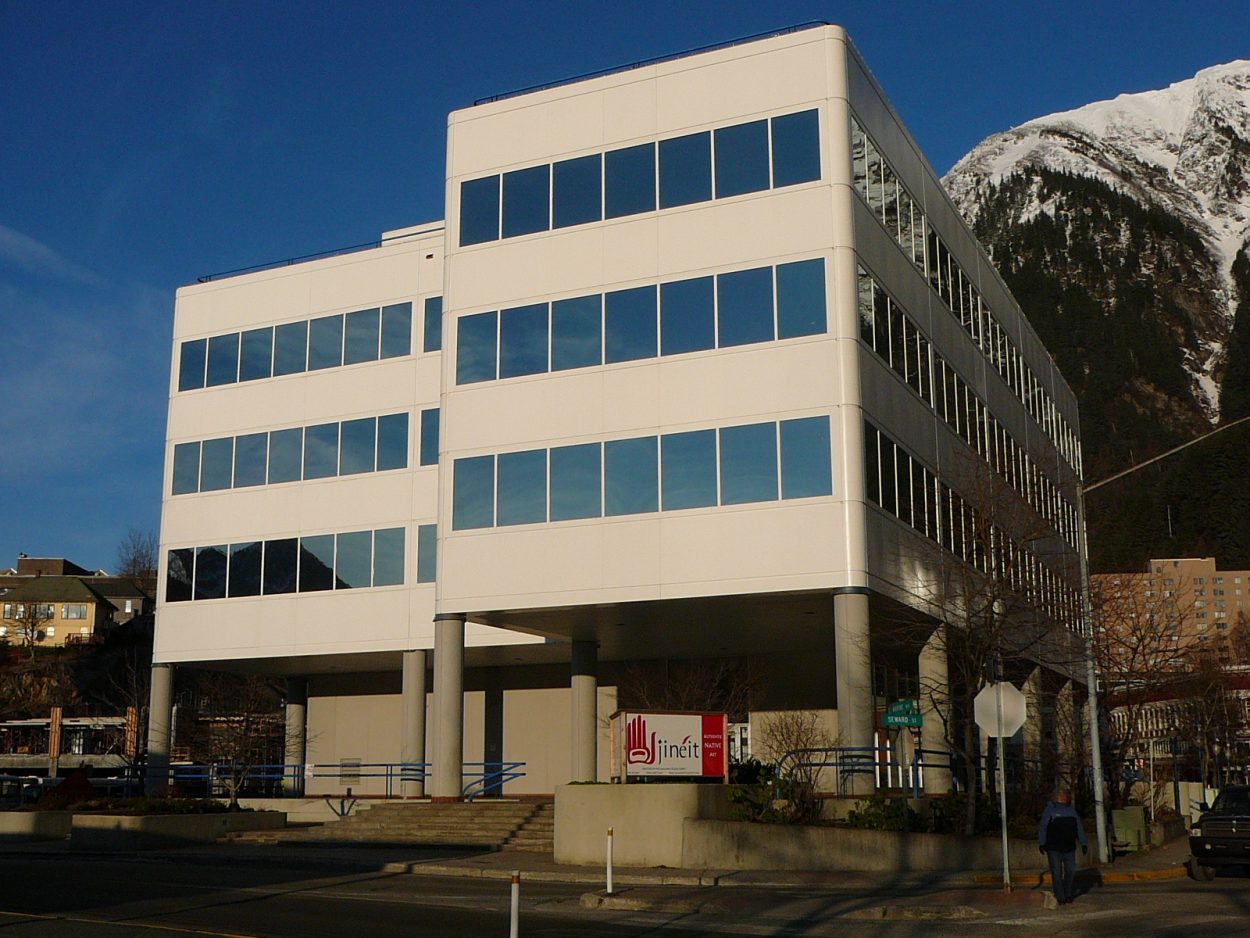
Sealaska’s December distribution to its 22,000 shareholders ranges from $1,182 to $131 each. (Graphic courtesy Sealaska)
Sealaska will distribute $17.5 million in dividends to its 22,000 shareholders on Dec. 3.
More than 60 percent will receive $1,051. Most of the rest will get around $131.
The difference is a payout from a statewide pool of other regional Native corporations’ resource earnings. Urban shareholders get it directly, but village and new shareholders don’t.

Sealaska CEO Anthony Mallott, right, discusses the regional Native corporation’s earnings and losses during a May press conference as Chief Financial Officer Doug Morris looks on. (Photo by Ed Schoenfeld/CoastAlaska News)
The dividends are mostly funded by other regional Native corporations’ resource earnings, though officials at the Juneau-based corporation said that will change. Sealaska CEO Anthony Mallott said the pool, known as 7(i), is expected to shrink.
“The 7(i) income we receive is very tied to commodity pricing. And the two main commodity prices that affect the 7(i) we see is oil prices and zinc prices. And both of them have been pretty significantly hit in this recent commodity price decline,” Mallott said
About 8 percent of the larger dividends come from Sealaska’s permanent fund. Around 5 percent comes from operations, which sounds like the corporation’s own earnings. But at this point, Mallott said most of that money also comes from the resource earnings pool.
Sealaska has been trying to bounce back from a $57 million operational loss since 2013.
The recovery plan is to buy a controlling interest in one or several seafood, government services or other businesses with growth potential.
“Putting our investment capital to work is going to be one of the only significant solutions to deal with any decline in 7(i). We understand that pressure, but we still want to keep to a process where we are comfortable that we’re making the right decision,” he said.
Mallott said Sealaska continues researching potential purchases. He said it’s negotiating with about a half-dozen companies, though he didn’t say what they are.
The Sealaska shareholders getting larger, $1,051 dividends are also enrolled in an urban Native corporation, such as Juneau’s Goldbelt. They get the 7(i) part of their payment directly.
Those also enrolled in village corporations, such as Saxman’s Cape Fox, may or may not. The money is sent to the village corporations, which decide whether it should be distributed to shareholders.
Shareholder descendants receive the smaller, $131 amount, as do those called “leftouts.” Registered elders receive an additional $131.
Totals are based on an average ownership of 100 shares. Some shareholders have more or less – or a mix of share types – due to inheritance and gifting.






